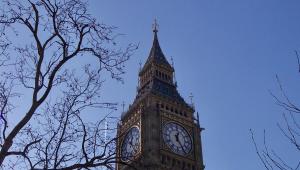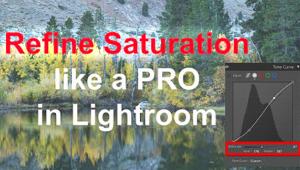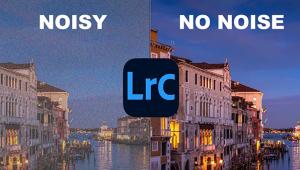Street Seen: Michael S. Miller’s Classic Moments
Michael S. Miller will tell you there’s only one rule of street photography: always carry your camera.
Self-evident, right? Still, how often do we find ourselves face to face with a great moment and think, if only I had my camera?

All Photos © Michael S. Miller
The camera Michael carries might be his Leica M6, loaded with either Ilford XP-2 or Kodak BW400CN chromogenic film and fitted with either a 35mm f/2 or 50mm f/2 Summicron lens; or his Fuji X10 point-and-shoot with its zoom lens set for the equivalent of 50mm; or his Nikon D200 or D700 with the manual 50mm f/1.4 Nikkor lens he got with his F3 back when he was in college. For the most part, Michael maintains a 50mm view of the world for his street photography—in fact, he teaches a 50mm workshop in which students are required to bring only a prime 50mm lens, and for which he shows his street photography to demonstrate what can be done with a 50mm.
Of course, using mostly one prime lens requires that he do much of his composing with his feet. Not a problem: “To zoom in, I move forward,” he says, “and to zoom out, I move back. And if I can’t get close enough or far enough, I move on.”



Move on? Give up on the photo and leave? Yes, exactly. Michael doesn’t get emotionally involved in getting any one picture, any one moment. He’s both serious about his work and rather casual. “If I get it, I get it,” he says. “If not, there’ll be another moment. I don’t force it. If you go out trying to create art, you’ll never create it. The conditions are always there—time, space, people—and they’re going to come to me. There will always be another picture. Life happens.”
Most of the time the people he photographs are unaware of his presence (in the photos here, only the street performer knew his picture was being taken). “I don’t walk around with the camera around my neck,” Michael says. “It’s in my hand down at my side, or sometimes at shoulder height.
If I see a scene I lift it to my eye, check my focus and I’m pretty much ready to take the shot. My f/stop is always set at f/8 and my ISO at 400, and then I manually adjust my shutter speed.” A person who’s aware of Michael will almost always either give him a smile or demonstrate some hesitancy. If the person doesn’t want his picture taken, Michael moves along.


After he’s taken the shot, there’s no checking, no chimping. “I don’t look at the LCD, and for the workshop I bring some painter’s masking tape and cover the LCDs of the students’ cameras. Their assignment is to go out and shoot; we’ll review the pictures when they come back. They find the exercise gets them in tune with their subjects and gets them to anticipate more. I don’t want them second-guessing or second-chancing themselves; let them get the picture they saw in their mind.”
Which is not to say that the students and their instructor are averse to improving that picture. Michael will crop to strengthen an image, and he also does a bit of postproduction manipulation to give his images a classic feeling—“it’s obvious I’ve been inspired by classic street photography”—and a look that’s somewhat different from other photographers shooting black-and-white street photographs.
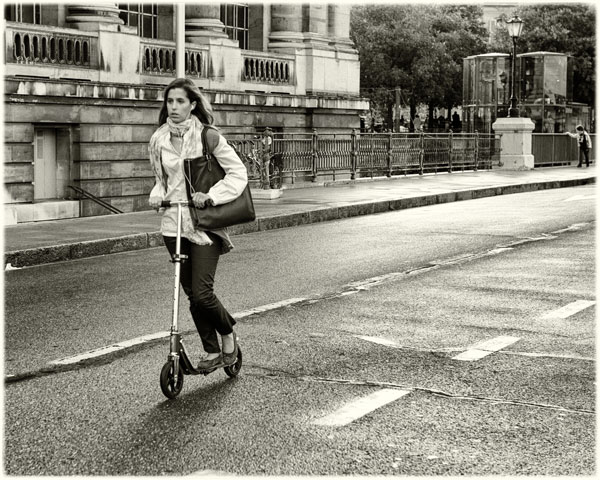
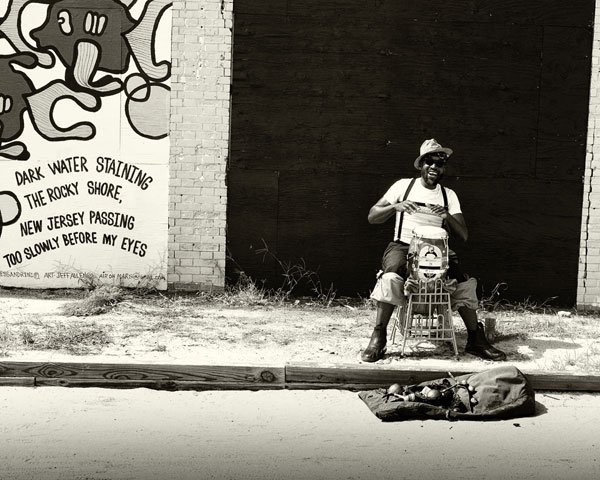
In Lightroom the images taken with his digital cameras are desaturated and contrast and tonal curves often adjusted. “I’ll open some of the images in Silver Efex Pro,” he says, “and I’ll add some nuances of contrast and bring up some of the areas of texture in road surfaces, wooden benches, or straw hats, for example. Also in Silver Efex, I’ll add a preset for grain to simulate some of the film grain of yesteryear. I’m partial to the look of Plus-X and Agfa 100, and I’ll apply one, two, or three levels of grain for the feeling I want. Then I save the image back to Lightroom for a final touch of toning. I use the split-toning feature, and I have a preset I use for a coppery, sepia kind of tone. I have a custom number for the percentage mix I like: number 37 at 8 to 10 percent for highlights [and] 7 or 8 percent for shadows.”
For the black-and-white film images shot with his Leica on Ilford or Kodak chromogenic film, a local lab handles the C-41 processing and returns to him the negatives and a disk of scans. Chosen negative scans go into Lightroom for postproduction work.
From time to time Michael will shoot Kodak’s Tri-X, and when he does he processes the film himself—“in good old classic Kodak developers, stop bath, and fixer.” Because he doesn’t have a darkroom, he’ll take the film, developing reels, and a changing bag into a dark closet and exit with two reels loaded into a developing tank. The processed and dried negs are cut into strips of six images and selected shots are scanned by his Epson Perfection 3200 to get the digital files for postproduction.

Regardless of the camera or capture medium, all of Michael’s decisions are based on what he feels works best for the content of the image. “That content, that moment in the frame, is the most important thing in my street photography,” he says. “I see myself as a classic photographer using today’s technology, and I’m looking for a timeless appearance for my photographs.”
Michael is working toward a gallery exhibit and a book of his Everyday People street photography project. You can see a collection of the photos, and learn about his workshops, at his website, www.msmpix.com.
- Log in or register to post comments
















